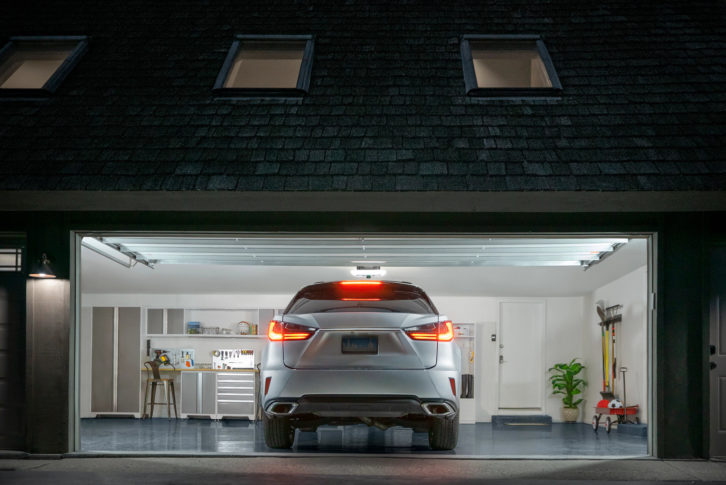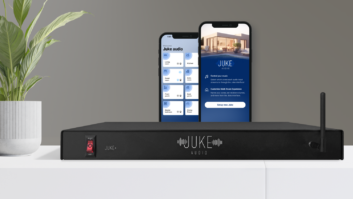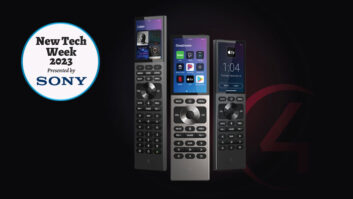Last week I needed to replace our home’s old non-connected garage door opener — it was about 10 years old and it failed. cyberManor is not in the garage door opener business but we are in the connected home business. I asked my garage door vendor to have one of the LiftMaster MyQ openers installed since it is Wi-Fi-connected and there is a Control4 driver for this lift motor. I had it installed and it works great — it even has a built-in camera so when I link it to an Amazon delivery service I can see who has entered and left the garage. I also asked my garage door opener installer what percentage of his clients now have a connected garage door opener installed, and he said 100 percent of them! Less than 10 years ago these intelligent garage door openers were few and far between — for the most part they were all under-capitalized Kickstarter company efforts.

I tell this story because the same history of connected home product innovation could be said for thermostats, front door stations, fans, skylights, irrigation systems, shades, lighting control, whole house music, and even coffee machines! The smart, connected version of these products are now going into almost every new or remodeled home technology installation.
Included in this steady stream of connected products comes a software app and a hardware remote for the control of each of these individual products — leaving homeowners with multiple apps and remotes that have different interfaces and rarely communicate with one another. We’ve experienced this story before when the TV, set-top box, AV receiver, and the DVD each had their own remotes. It became a frustrating control experience for the homeowner and led to the rise of the well-programmed universal remote controller — typically installed and programmed by a custom AV installer.
Also by Gordon van Zuiden: Using an Apple Watch for Home Control
Now the whole house is filled with different physical remotes from smart home product manufacturers, confusing the homeowner with a variety of home control remotes that each look and operate with a different interface. As a result, there has never been a better time to install and support total home hardware and software control systems from Control4, Savant, Crestron, URC, and ELAN, to name a few. Not only do these total home control interfaces provide an easy-to-use graphic software and keypad interface to control all of the home subsystems, they also provide communication paths between the subsystems to allow levels of automation that are not easily accomplished by individual app-based control.
What About Matter to the Rescue?
To try and resolve these smart home software integration and operability issues, the biggest names in the consumer electronics industry — Apple, Google, and Amazon — along with major manufacturers such as Samsung and LG, have recently released the Matter software platform. Matter, a common language for smart home devices to communicate, aims to simplify everything about the smart home, from purchase, to setup, to everyday use. Its greatest promise is that it will enable smart devices to easily work with each other, across platforms and ecosystems, no matter who makes them.
We’ve seen attempts to become a total home control operating system before — think Microsoft Media Center, Apple HomeKit, Samsung SmartThings, and on and on. The fundamental problem with these platforms gaining universal and long-term traction is that each of these companies (the largest consumer electronics companies in the world) have a vested interest in protecting their intellectual property in order to maintain long-term profitability. Their willingness to continuously and openly communicate and partner with their primary competitors, potentially compromising their product’s differentiation and profitability in the market, has always fallen short in the long run. These grandiose partnerships have simply not been sustainable.
Fortunately, for our affluent smart home consumers we have total home control systems designed and installed by the custom home integrator that offer easy-to-use, long-term, and sustainable operating control systems for the home. These home operating systems are built for interoperability — their success depends on how well they execute this challenging task over the long run.
Total home integration control work is not easy. The challenge is that our profession must constantly educate ourselves to keep up with the rapid hardware and software advancements in the smart home market. This is one of the key reasons that cyberManor built a showroom home — not only can we showcase the benefits of single-app-based home automation hardware and software, but we constantly monitor and vet how well new product innovations work in our showroom before we put them in our proposals (see NHTC.tumblr.com).
Also by Gordon van Zuiden: Smart Kitchen and Bath Appliances
In our showroom home, when we tell a client to say, “Okay, Josh I’m home,” we are able to show how one simple voice command can trigger a Control4 scene that turns on the lights, plays background music, opens the shades, and turns on the air conditioner in the summer. This level of simplicity and integration is the cornerstone of our custom installation services.
As the need for a TV universal remote controller has diminished because an Apple TV or Roku with YouTube TV can now serve as a one-product solution for almost all TV viewing needs, it’s good to know that demand for our expertise in providing a universal hardware and software remote control platform for the whole home has never been greater!
cyberManor has partnered with Daisy, a nationwide smart space installation and services company. cyberManor is one of Daisy’s first flagship integrators and will begin operating with the Daisy name in summer 2024. In the meantime, cyberManor is fulfilling projects & providing service under Daisy. To learn more, please visit https://daisyco.com/silicon-







